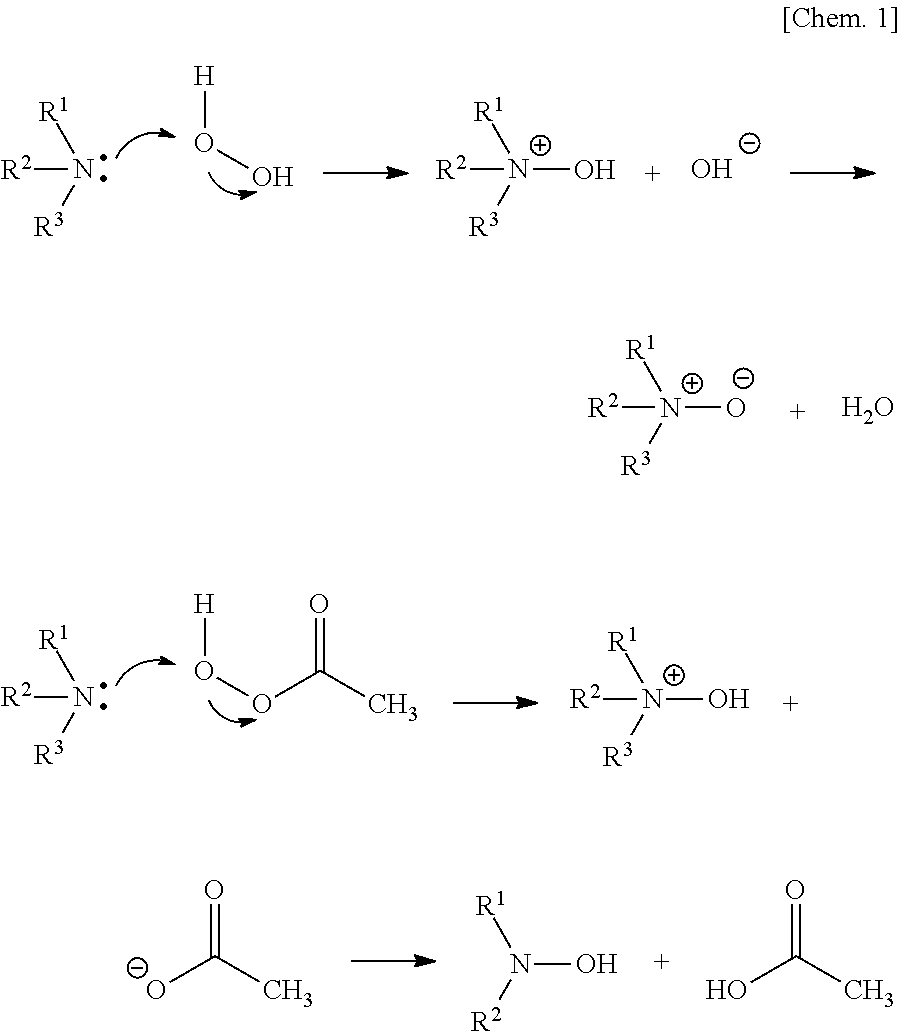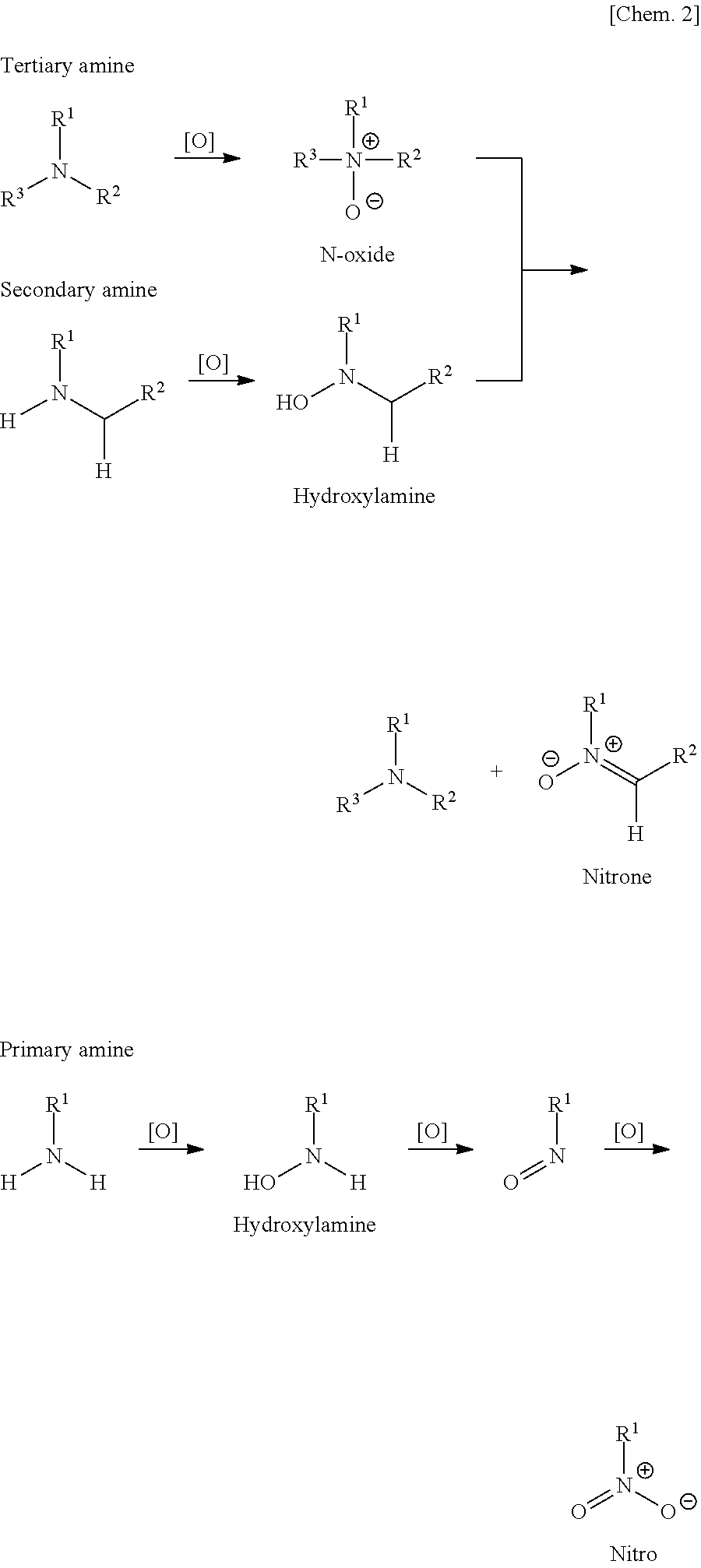Metal nanoparticle composite body, metal colloidal solution, and methods for producing these
a metal colloidal solution and composite body technology, applied in the field of metal nanoparticle composite body, metal colloidal solution, and methods for producing these, can solve the problems of affecting the widespread use of materials, affecting the application of materials, and affecting the use of materials, etc., and achieves good low-temperature firing properties, easy and rapid detachment from the surface, and good conductive properties at low temperature
- Summary
- Abstract
- Description
- Claims
- Application Information
AI Technical Summary
Benefits of technology
Problems solved by technology
Method used
Image
Examples
synthetic example 1 (
Synthesis of Tosylated Polyethylene Glycol Monomethyl Ether)
[0072]Into a solution of 25.0 g [12.9 mmol] of polyethylene glycol monomethyl ether (PEGM, number-average molecular weight (Mn): 2000) and 24 g (300 mmol) of pyridine in 150 ml of chloroform, 7.36 g (38.6 mmol) of tosyl chloride was added, and the resulting mixture was stirred overnight at room temperature. Pyridine was distilled off from the reaction mixture at a reduced pressure, 150 mL of chloroform was added to the residue to dilute the residue, and the diluted mixture was washed with 250 mL (340 mmol) of a 5% aqueous HCl solution, then with saturated brine, and then with water. The resulting chloroform solution was dried over sodium sulfate, the solvent was distilled off with an evaporator, and the residue was further dried at a reduced pressure. As a result, 23.6 g of white solid was obtained (85% yield).
[0073]1H-NMR (CDCl3): δ (ppm)=7.8 (d, 2H, J=7.8 Hz, tosyl group), 7.3 (d, 2H, J=7.8, tosyl group), 4.2 (t, 2H, J=4....
synthetic example 2 (
Synthesis of Precursor Compound a-1: Polyethyleneimine-b-Polyethylene Glycol Compound)
[0074]In 180 ml of N,N-dimethylacetamide, 23.2 g (1.1 mmol) of tosylated polyethylene glycol obtained in Synthetic Example 1 and 15.0 g (1.5 mmol) of branched polyethyleneimine (EPOMIN SP200 produced by Nippon Shokubai Co., Ltd.) were dissolved. To the resulting solution, 0.12 g of potassium carbonate was added and the mixture was stirred in a nitrogen atmosphere at 100° C. for 6 hours. Upon completion of the reaction, solid matter was removed and reduced-pressure concentration was performed at 70° C. A mixture of 150 ml of ethyl acetate and 450 ml of hexane was added to the residue and precipitates were obtained. The precipitates were dissolved in 100 ml of chloroform and a mixed solvent containing 150 ml of ethyl acetate and 450 ml of hexane was again added to perform resettling. The resulting product was separated by filtration and dried at a reduced pressure. As a result, a pale yellow solid ma...
example 1 (
Synthesis of Silver Colloidal Solution by Using Nitrogen-Containing Compound Prepared by Oxidizing Precursor Compound a-1 with Ammonium Persulfate)
[0080]The precursor compound a-1 (3.24 g) obtained in Synthetic Example 2 was dissolved in 10 mL of water and ammonium persulfate (108 mg, 0.48 mmol, equivalent to 1% of N atoms) was added to the resulting solution. The mixture was then stirred for 1 hour at room temperature and left to stand overnight.
[0081]One drop of the polymer solution obtained was added to 10 mL of purified water and about 1 mg of 2,3,5-triphenyltetrazolium chloride was added thereto and dissolved by shaking. The mixture immediately developed reduction color (red). Thus, it was confirmed that N—OH was contained in the polymer structure.
[0082]About 3 mL of the polymer solution obtained was concentrated and dried at reduced pressure and then the residue was dissolved in deuteriochloroform to measure 1H-NMR. Broad signals not found before the oxidation were observed at...
PUM
| Property | Measurement | Unit |
|---|---|---|
| particle size | aaaaa | aaaaa |
| diameter | aaaaa | aaaaa |
| specific resistivity | aaaaa | aaaaa |
Abstract
Description
Claims
Application Information
 Login to View More
Login to View More - R&D
- Intellectual Property
- Life Sciences
- Materials
- Tech Scout
- Unparalleled Data Quality
- Higher Quality Content
- 60% Fewer Hallucinations
Browse by: Latest US Patents, China's latest patents, Technical Efficacy Thesaurus, Application Domain, Technology Topic, Popular Technical Reports.
© 2025 PatSnap. All rights reserved.Legal|Privacy policy|Modern Slavery Act Transparency Statement|Sitemap|About US| Contact US: help@patsnap.com



